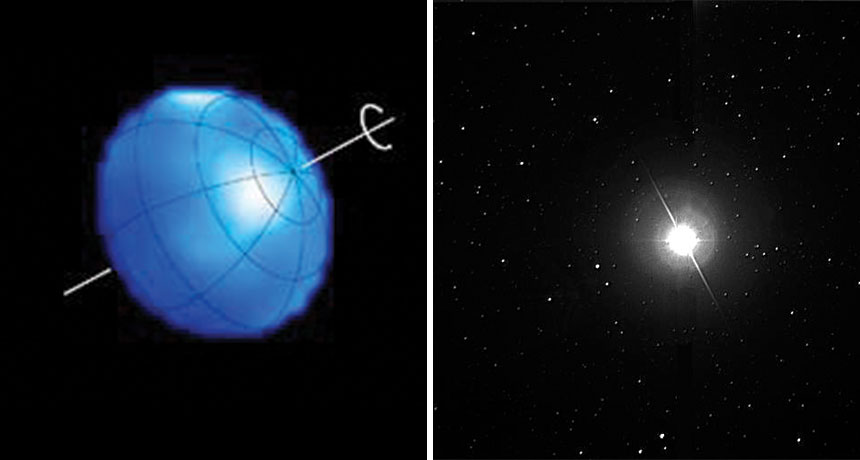Bulging stars mess with planet’s seasons

SAN DIEGO — On some planets that orbit whirling stars, spring and autumn might be the best time to hit the beach, whereas summer offers a midyear respite from sweltering heat. These worlds’ orbits can take them over regions of their sun that radiate wildly different amounts of heat.
“Seasons on a planet like this must be really strange,” says Jonathon Ahlers, a graduate student at the University of Idaho in Moscow, who presented his findings June 15 at a meeting of the American Astronomical Society.
Some stars spin so fast that they bulge in the middle. That bulge pushes the equator away from the blazing core, making it much cooler than the poles. A fraction of these stars also host planets that travel on cockeyed orbits, which take these worlds alternately over the poles and equator of their sun.
Ahlers developed computer simulations to see how the differences in solar energy combined with the tilted orbits might affect a planet’s seasons. The outcome depends on how the planet’s axis is tipped relative to its orbit. For a world whose north and south poles periodically face the star’s equator, “you get a cooler summer than normal and an extremely cold winter, but spring and autumn can be hotter than summer,” says Ahlers. “You get two distinct hottest times of the year.”
How that plays out depends on how the planet is built: an atmosphere or oceans could mitigate climate extremes. Ahlers has yet to work out those details. “It’s doing a lot,” he says, “but what, I don’t really know yet.”